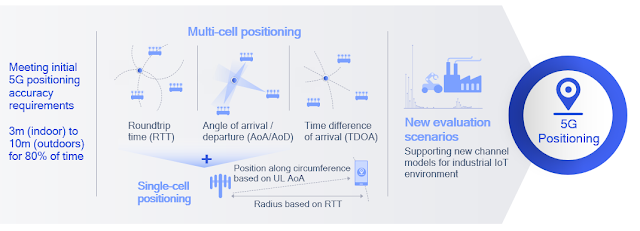The data volume of UE Radio Capability Information defined in 3GPP 38.306 is already high and will further increase starting with Rel. 16 due to additional supported bands and other features.
Due to this 3GPP has standardized in Release 16 what is called UE Radio Capability Signaling Optimization (RACS) for both, E-UTRAN/EPS and NG RAN/NGC networks.
Release 16 RACS does not apply to NB-IoT.
The first key element of this feature set is the introduction of a new UE Radio Capability ID that is structured as defined in 3GPP 23.003 and shown in figure 1 below:
 |
| Figure 1: UE Radio Capability ID according to 3GPP 23.003 |
The components of this new ID are:
- TF - Type Field (TF): identifies the type of UE radio capability ID.
Type = 1 -> network-assigned UE radio capability ID
- The Vendor ID is an identifier of UE manufacturer and only present if TF = 0. The vendor IDs are provided by Internet Assigned Numbers Authority (IANA). The complete list of assigned numbers is publicly available here: https://www.iana.org/assignments/enterprise-numbers/enterprise-numbers
- The Version ID configured by the UE Capability Management Function (UCMF) that is part of the EPS/5GC. The Version ID value makes it possible to detect whether a UE Radio Capability ID is current or outdated.
· The Radio Configuration Identifier (RCI) identifies the UE radio configuration.
The PLMN-assigned UE Radio Capability ID is assigned to the UE using the Non-Access Stratum UE Configuration Update Command or Registration Accept message (figure 2).
 |
| Figure 2: PLMN-assigned UE Radio Capability Update according to 3GPP 23.743 |
The new UCMF (UE radio Capability Management Function) stores All UE Radio Capability ID mappings in a PLMN and is responsible for assigning every PLMN-assigned UE Radio Capability ID.
Due to introduction of the UMCM in the core networks the new Nucmf service-based interface is defined for the 5GC and new S17 reference point is defined for the EPS as shown in figure 3.
 |
| Figure 3: Network Architecture with UCMF according to 3GPP 21.916 |
Each UE Radio
Capability ID stored in the UCMF can be associated to one or both UE radio
capabilities formats specified in 3GPP TS 36.331 [LTE RRC] and 3GPP
TS 38.331 [NR RRC]. The AMF must only be able ot handle the NR RRC
format while the MME uses the LTE RRC format. Which format is required by the
UCMF is configurable.
If at any time the AMF/MME has neither a valid UE Radio
Capability ID nor any stored UE radio capabilities for the UE, the AMF/MME may
trigger the RAN to provide the UE Radio Capability information and subsequently
request the UCMF to allocate a UE Radio Capability ID.
In NG RAN the UE Capability Request can be requested by the AMF as a flag in any NGAP Downlink NAS Transport message or by sending a NGAP UE Radio Capability Check Request (for checking compatibility of IMS voice capabilities). This triggers a NR RRC UE Capability Transfer procedure and subsequently NGAP UE Radio Capability Info Indication or NGAP UE Radio Capability Check Response (for IMS voice support parameters).
Using the NGAP UE Capability ID Mapping procedure the NG RAN
node is able to request the most recent UE Capability ID mapping information
from the core network functions AMF/UCMF. The same functionality is implemented
in S1AP for signaling between eNB and MME/UCMF.
If the volume of the LTE/NR RRC UE Capability to be sent by the UE is larger than the maximum supported size of a PDCP SDU (specified in 3GPP 38.323) then the UE Capability Info can be transported in LTE/NR RRC using a chain of UL Dedicated Message Segment messages.
 |
| Figure 4: RRC UL Dedicated Segment Message transporting UE Radio Capability Information according to 3GPP 36.331 and 38.331 |
Each of these message will have a dedicated segment number and the last one has the rrc-MessageSegmentType = “lastSegment”, which triggers reassembly of the orignal UE Capabability information in the receiving entity.


































